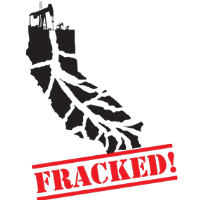State Quickly OKs Fracking Regulations; Environmental Studies Still TK

Who says government can’t move fast.
Last year, lawmakers delayed the start of implementing new regulations for oil and gas well stimulation, like fracking, for six months until July 1, coinciding with the due date for an environmental impact report and water testing procedures.
But state regulators efficiently made a January 1 deadline, left in place by lawmakers, to release the final version of the regulations (pdf). CAFrackFacts spokesperson Jackie Pomeroy told the San Francisco Bay Area Independent Media Center, otherwise known as Indybay, they shouldn’t have done that.
“California has essentially reversed the regulatory process when it comes to fracking. State regulators have finalized California's fracking rules a full six months before any of the mandated scientific studies have been completed. Given the long-term and potentially irreversible impacts of fracking and well stimulation, it is critical that we make policy decisions based on science—unfortunately, the current timeline makes this impossible.”
Although Senate Bill 4 puts in place some of the nation’s toughest regulations, that might not be saying much. Critics find public notification provisions in the bill to be ineffectively weak and while it does require frackers to reveal what toxic materials they are injecting into the ground, they can keep secret details on the mix of the toxic brew.
They argued vehemently for a moratorium until studies of fracking, which has been linked to groundwater contamination, air pollution, releases of methane gas, micro-earthquakes and sink holes, are complete.
The oil industry has been relatively happy with the process or regulation as it rolls out, according to Shale Daily. Tupper Hull, spokesperson for the Western States Petroleum Association (WSPA), told them, “We now have a path forward that will allow energy producers to use technologies that have proven to be safe and effective over the past several decades.”
Sounds like they are rarin’ to go.
Well-stimulation techniques have been around for decades, but new technological refinements and a certain desperation in the marketplace that peak oil had been reached helped launch an explosion in U.S. oil output. At one point it looked like California’s shale oil deposits, reachable only through well stimulation, might rival Saudi oil reserves. That oil bonanza is apparently not happening.
Neither is the never-ending upward march of oil prices. The world is awash in oil for a variety of reasons, and the Saudis seemed determined to have someone else—Russians, Venezuelans, Iranians, Chinese, tar sands developers, shale drillers—reduce production.
The price of oil peaked at $140 a barrel in May 2008, plummeted briefly below $40 a year later in the throes of the Great Recession, hit $105 in July 2014 and is now around $48 and dropping precipitously. Some folks think it’s headed for $20 or someone cries uncle.
The Saudis get their easily accessible oil out of the ground for around $10 a barrel and have very deep pockets. It costs most everyone else a lot more. The drop in price also disrupts efforts to shift from fossil fuels to alternative energy sources. It remains to be seen what effect it will have on California fracking.
–Ken Broder
To Learn More:
California Releases Fracking Regulations Six Months Before Studies Are Complete (by Dan Bacher, San Francisco Bay Area Independent Media Center)
California Fracking Rules Made Final, Effective July 1 (by Richard Nemec, NGI’s Shale Daily)
State Delays “Emergency” Fracking Regulations Another Six Months (by Ken Broder, AllGov California)
Narrative Description of Well Stimulation Regulations (California Department of Conservation) (pdf)
- Top Stories
- Controversies
- Where is the Money Going?
- California and the Nation
- Appointments and Resignations
- Unusual News
- Latest News
- California Forbids U.S. Immigration Agents from Pretending to be Police
- California Lawmakers Urged to Strip “Self-Dealing” Tax Board of Its Duties
- Big Oil’s Grip on California
- Santa Cruz Police See Homeland Security Betrayal in Use of Gang Roundup as Cover for Immigration Raid
- Oil Companies Face Deadline to Stop Polluting California Groundwater





